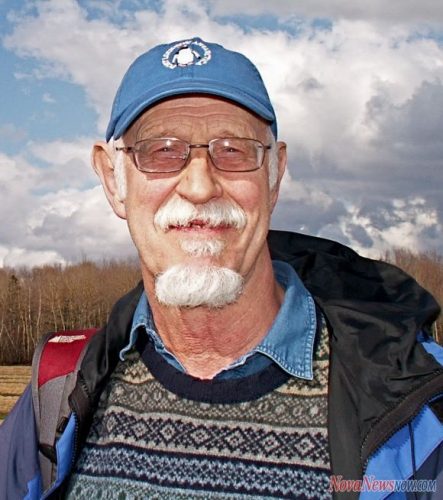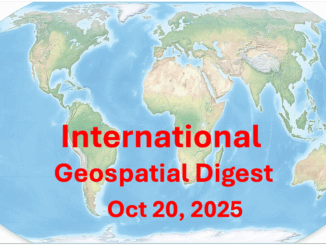![Bob_Maher_B[1] ||||||||||](https://gogeomatics.ca/wp-content/uploads/Bob_Maher_B1-2-580x381.jpg)
Last week, I was forwarded a YouTube video produced by Ian Manning.
[youtube https://www.youtube.com/watch?v=hifC7pzI5Gg&w=400&h=300]
Ian works at the Applied Geomatics Research Group in Middleton under the direction of Bill Livingstone. He is the application developer of an interactive science atlas for the UNESCO Southwest Nova Biosphere Reserve Association (SNBRA).
I went to AGRG to speak with Ian and Bill, and see a live demonstration. The atlas documents and describes the science and communities in Southwest Nova Scotia. It is an educational tool for students and land owners, and also provides a platform for the scientific community to share their research with the public.
The original concept and funding was developed by David Colville, COGS Faculty and Cliff Drysdale, Chair, SNBRA.
The video and the ArcGIS Online application interested me for a number of personal reasons:
Until 2011, I was the Chair of SNBRA. As Senior Research Scientist at AGRG, I was aware of the earlier work by Amy Stephens to produce a hard copy resource atlas for the region in 2002. Ian is enrolled in the joint Masters program in Applied Geomatics between NSCC and Acadia University. This program was developed with John Roth in the same time frame. His thesis supervisor is David Colville.
The eighteen month project is funded by the Nova Scotia Department of Natural Resources. SNBRA is supported by the municipal units of the five counties in the region.
Project Design
YouTube video proved to be a good method for sharing the atlas design and receiving feedback. As it is a work in progress, Ian prefers not to share the live link at this time.
The atlas contains twelve chapters. In the video, it illustrates the first six: Forestry, Climate, Geology, Agriculture, Biota and Aquatic Resources. The next six are Communities, History, Culture, Protected Areas, Physical Geography and Coastal. Each chapter has six pull down tabs: Introduction, Maps, Research, Inspire, Interact, and Open Data. The Introduction explains the content of the chapter. The Maps tab shows the available interactive maps. Research describes ongoing research on that theme. Inspire refers to organizations that inspire interest in that topic. Interact illustrates new visualization tools within a GIS environment. Finally, Open Data is a compendium of online resource documents that provide links to the background science for that particular chapter or theme.
The core values of a UNESCO Biosphere Reserve are conservation, sustainable development and capacity building for research and education. In Canada today, there are eighteen biosphere reserves. The Southwest Nova Biosphere reserve was established in 2001. It has a core area: Kejimkujik National Partk, and the Tobeatic Wilderness Area, a buffer zone, and then the working landscape. The working landscape here is the five counties of Annapolis, Digby, Yarmouth, Shelburne and Queens. The buffer is an arbitrary area, where parties agree to maintain the values to protect the core.
The interactive online atlas has enormous potential for the sharing geographic information with a wide range of communities: both place-based (e.g. towns and village of Annapolis County) and thematic-based (e.g. forestry, environment, culture). At the same time, it raises a number of interesting institutional questions. For example, the project is funded by the province, the client is SNBRA and the contract is being completed by staff at AGRG. Once the atlas is completed (September 2018) and the data is available online, who is responsible for maintaining the geographic database? Who has access to the technology? SNBRA or the Nova Scotia Community College (NSCC). If it is SNBRA, do they have the technical expertise? If it is the NSCC, what arrangement exists for sharing the technology with community groups in Southwest Nova?
For further discussion on the relationship between institutions and communities, check out my blog. Mind the Gap; between institutions and communities. June 5,2017
My personal opinion is that this interactive atlas offers a significant opportunity for all parties. The NSCC could offer extension courses for community members on the technology, or it could evolve into a technology access centre.
One of the beauties of the project is that it is scalable to the larger geography of the province. Given there are eighteen biosphere reserves across the country, it also offers a template for other Canadian biosphere reserves.
Another dimension to the project would be to move from a land-based concept of the biosphere reserve, and to consider the marine environment. The livelihood of the citizens of Southwest Nova extends into the Bay of Fundy, as well as along the Atlantic coast. It will be interesting to see whether the atlas can be expanded to include more of the social sciences, as well as the ecological sciences. This might include census data, property information, business, tourism and recreation data sets.
Ian Manning plans to share the interactive atlas with a school group in Canning as part of GIS Day. This represents yet another type of community.





Be the first to comment